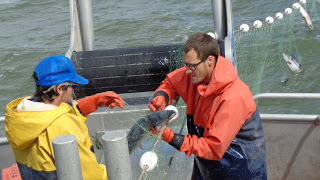Eggs are the snack food or quick meal that only contains one
ingredient: eggs! No sugar or carbs, and the least expensive source
of high-quality protein with 6 grams for a few cents. Protein helps
keep your mind and body going strong all day.
Egg yolks aren't future baby chickens – they are the food source
for growing chick embryos. In the last hours before hatching, a chick
absorbs the remaining yolk into it's body to keep fed for the first
few days of life. Yolks are good for you too; with choline, lutein,
Vitamin B, D and other important vitamins and essential amino acids.
The squiggly white line connected to the egg yolk is called the
“chalazae” and helps keep the yolk centered. Eggs are formed from
the inside out, starting with a yolk that grows larger as it travels
through the oviduct, eventually adding the whites or “albumen”,
then the shell comes last. When the egg is laid it is 105f. As it
cools, the liquid contracts forming an air pocket on the large end.
Eggs are laid large end first.
Nearly 200 breeds of chickens exist in the world. Some are bred for
meat qualities while most are bred for egg laying. Eggs come in a
wide range of colors from green, blue, and pink to white, brown, and
even black. Shell color depends on breed as well as individual
chicken and doesn't affect nutrition. Yolk color is affected by the
hen's diet and thus may indicate nutrition. Cloudy egg whites also
indicate a very fresh egg.
There are roughly 300 million egg-laying hens in the United States,
producing 75 billion eggs a year, or 25 billion chickens laying 1.2
trillion eggs world-wide. There are more chickens on the planet than
any other kind of bird and more chickens than people. In 1918, the
United States government put out a publication asking families to
keep two chickens per person in their back yards as part of their
civic duty.
Spin an egg to tell if it's hard boiled or not: raw eggs wobble
while it is possible to get hard-boiled eggs to spin on end. By
putting eggs in a bowl of water, you can judge their freshness –
fresh eggs sink while old eggs float. Eggs that are a little older
and brought to room temperature are easier to peel than fresh eggs
after hard-boiling.
Young hens lay more eggs, but older hens lay on average larger eggs.
Young hens just starting to lay are more likely to lay enormous
double-yolked eggs and other anomalies. The color of a hen's legs can
indicate if she's laying eggs; bright colored legs mean she's not
laying and dull colored legs show more nutrients are going to eggs.
Roosters don't cause a hen to lay eggs, light does. Hens, like
humans, don't need a male to ovulate. Without a rooster, unfertilized
eggs won't hatch, but will still be laid every 24-26 hours.
Roosters play an important roll in flock dynamics, not only by
continuing the life cycle with regular new chicks in the flock, but
also by watching out for predators and leading the flock in foraging
for food. Roosters also dance for their hens called “tidbitting”.
Without a rooster, a hen will sometimes stop laying and begin to crow
along with other rooster characteristics.
When fertilized eggs are laid, they don't start developing until the
hen starts sitting on them over night called “brooding”. All the
eggs begin developing at once whether they were laid two weeks ago or
that day. After 3 weeks of diligent incubating under a mama hen, the
eggs will all hatch within a day or two of each other.
Hens are attentive and protective mothers; Jesus is said to have
compared a hen's love for her chicks to God's love for humans, and
ancient Romans gave the complement, “you were raised by a hen.”
The egg shape of a small end and large end is a development to keep
eggs from rolling away. The angle of point varies by bird species;
cliff-nesting birds having very pointy eggs.
The world record for eating hard-boiled eggs is held by a woman
named Sonya Thomas for eating 65 eggs in under 7 minutes.









































